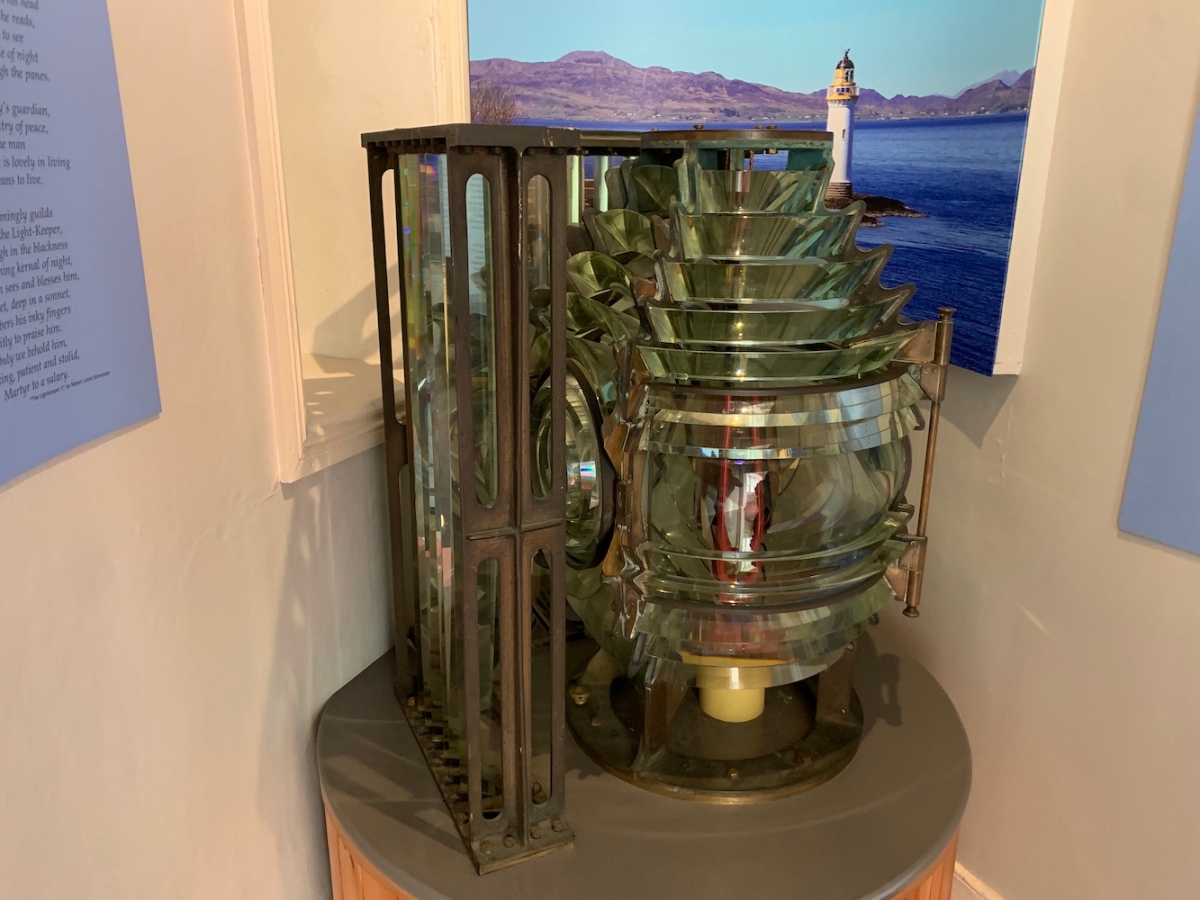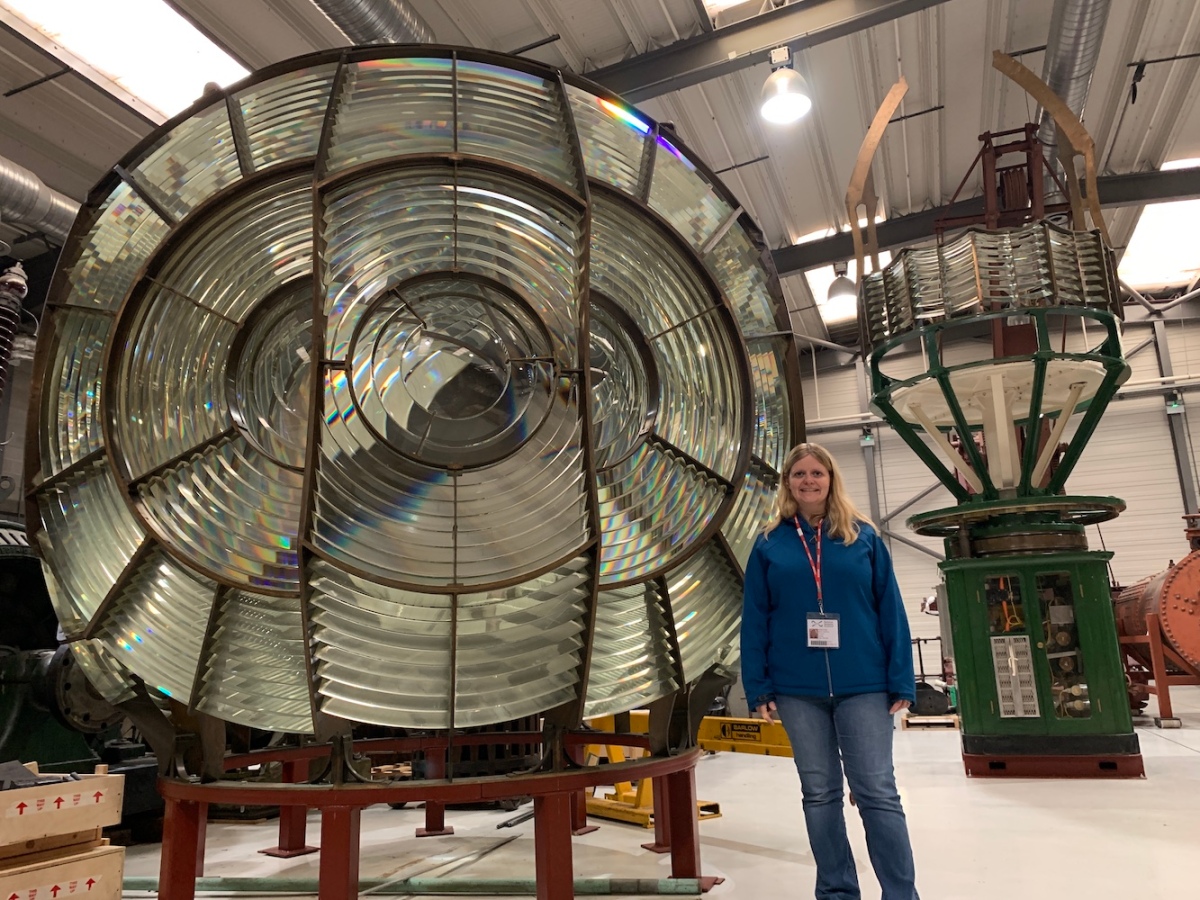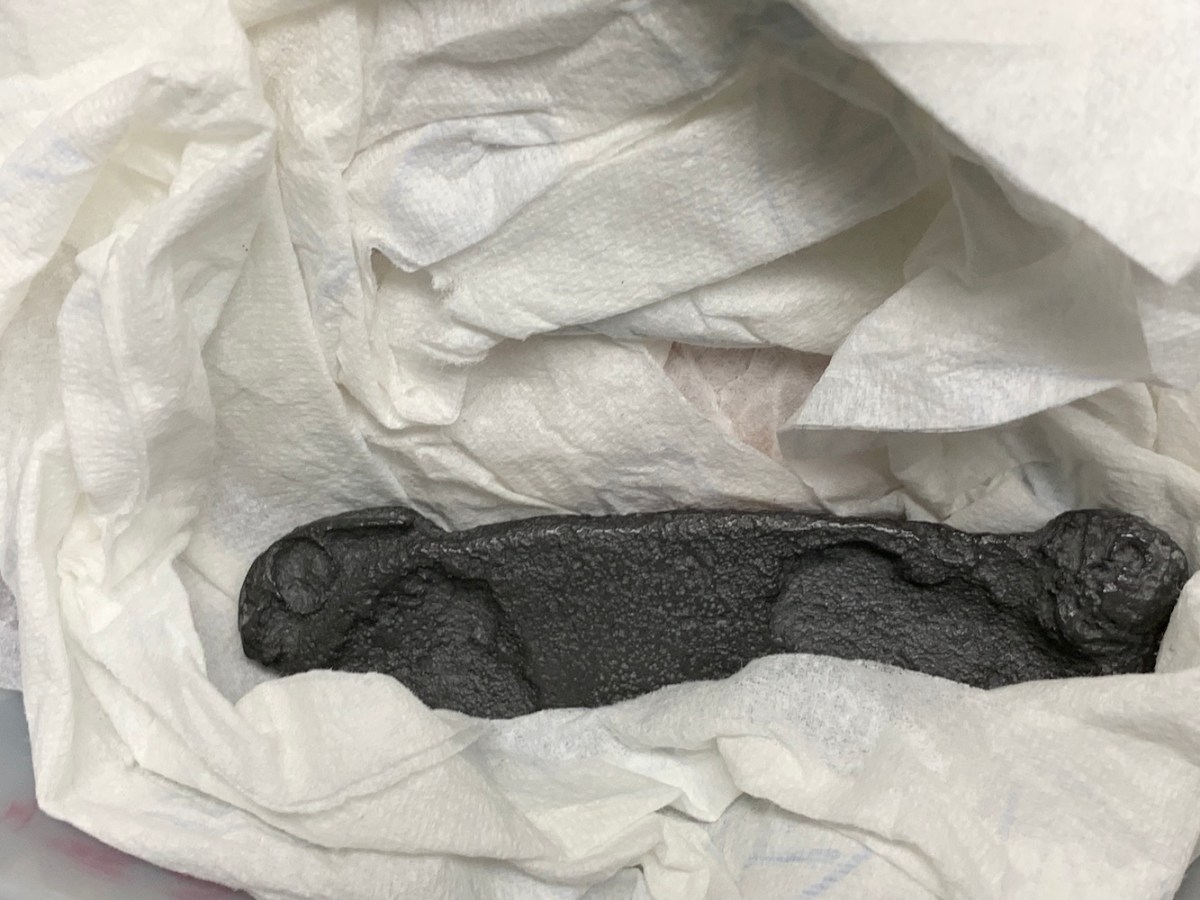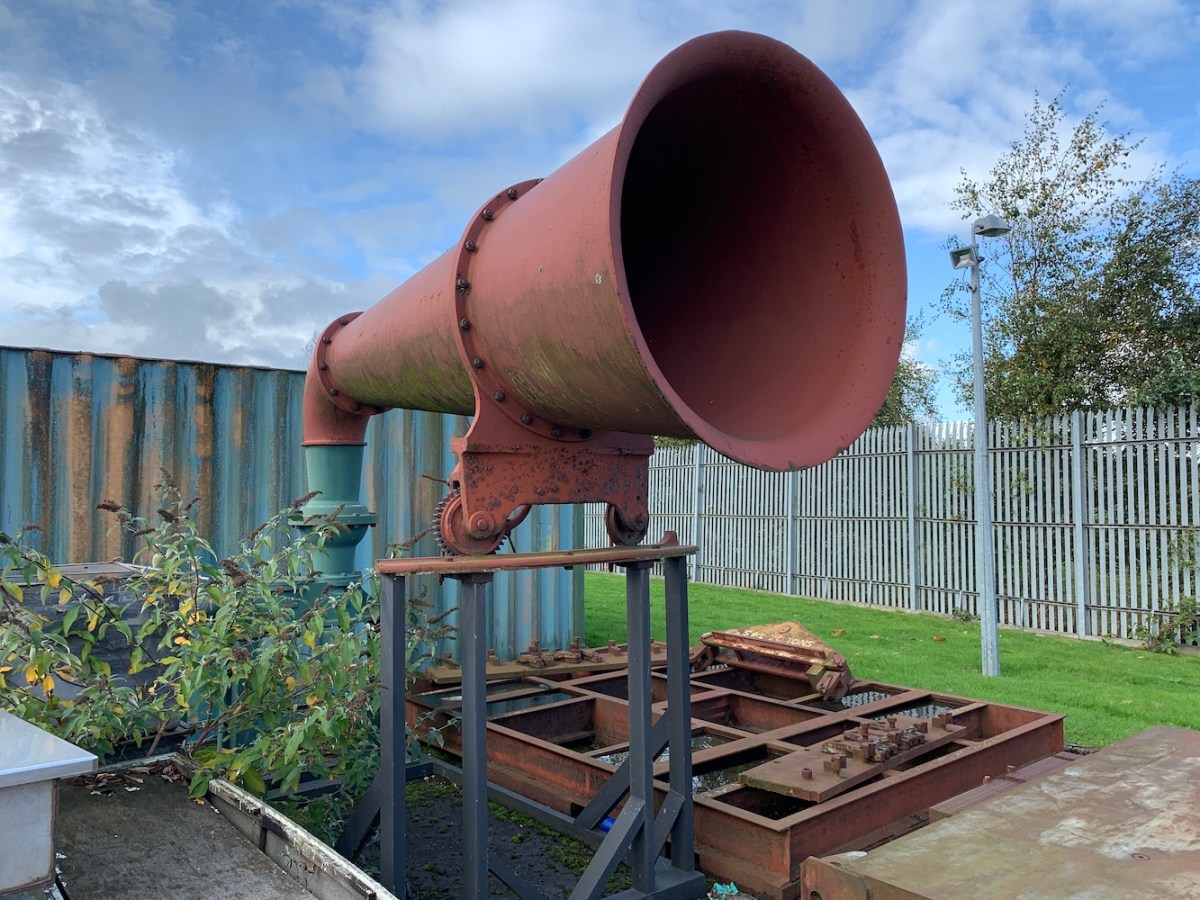Throughout my lighthouse “career” (if you can call it that), I’ve tended to stick to the towers. Not literally, of course, but I’ve not necessarily been distracted by the intricate details of the lights and how they all worked, the lighting sources, how the keepers lived – although I find it all very fascinating, and knowing some former lighthouse keepers now that area is of particular interest. In terms of visiting things though, it’s always been about the towers – until now!
I have a growing fascination with the optics, or lenses, that once projected the light out of the towers. Perhaps it’s because I’m seeing more of them or they are becoming less common with technological advances. Or maybe they are just incredibly beautiful. Whatever the reason is behind it, I am very much enjoying discovering lenses.
I had seen the former Inchkeith lens in one of the large halls at the National Museum of Scotland in Edinburgh earlier in the year and a couple of weeks ago I got to see it again. Most people use the platform it sits on as a seat and probably pay it very little attention (and get in the way of my photos), but it really is beautiful. It is a first order dioptric lens designed by David A Stevenson and it served its purpose in Inchkeith lighthouse, in the Firth of Forth, for 96 years before it was replaced in 1985. It is accompanied by the mechanism that rotated the lens. I recently spoke to a lady who curates the lighthouse exhibits for the museum (more on that very kind lady in a bit) and she said that they did try getting the lens and mechanism up and running in the museum in the past, but there were a number of technical problems with it. They have a number of other lighthouse-related exhibits at the museum with a dedicated section including a couple of films related to the keepers and the trials and tribulations of lighting the Eddystone Rocks off of the South Devon coast.

A few days later we found ourselves back in the centre of Edinburgh for a day. We were going to head towards the museum again, but our son decided that he wanted to walk up Carlton Hill to see the tower and buildings up there, so that was the decision made, up we went. We’d not necessarily planned to go into the Nelson Monument up there, but again the little man decided we would. As it was his birthday weekend and a bit of climbing up a tower is good exercise off we went. There are some great views from up there, including the island of Inchkeith where the lighthouse mentioned above can be found. It was back on the ground floor that we found an item of particular interest. Well, it was actually Bob who discovered it just as we were about to leave. It was the old lens from Rubha nan Gall lighthouse, just to the north of Tobermory on Mull. This one is a fixed Fresnel lens, named after physicist Augustin-Jean Fresnel who invented this type. It was removed from Rubha nan Gall lighthouse in 2012. That was quite a good find as there is very little information available about this one being hidden here. I’m hoping that will change now though since I’ve seen it and am telling everyone!

Now, this is where it gets really exciting. Back at the beginning of the year during a visit to the Museum of Scottish Lighthouses I was talking to their Collections Manager, Michael Strachan, who is really into lenses and knows all of the different types, which I am still getting to grips with. His knowledge of lenses is extensive and he particularly likes the hyper-radial type (the biggest and most powerful of all, so it’s completely understandable). I can’t recall exactly how the subject came up, but I must have mentioned that I was planning on going to Sule Skerry this year and he informed me that the old hyper-radial lens from Sule Skerry is now in the possession of the National Museum of Scotland. A little while later I discovered that it was kept in storage at the museum’s facility in Granton. I was in contact with the curator at the museum, Julie, and we left it that I would contact her when I was next in the area to arrange a visit to see it.
Although I’d not forgotten about it, I did leave it too late on this occasion to contact Julie, but she did get in touch and managed to make it along to my talk at the National Library of Scotland last month. She quickly introduced herself after the talk and we agreed that I would let her know when I was next in the area. By this point I was becoming a bit obsessed with wanting to see the lens. To be honest I’ve been a little obsessed with Sule Skerry lighthouse in general since visiting it in May – or maybe the obsession began before that when I could only refer to Sule Skerry as “the place that cannot be named” due to getting over-excited every time I thought about it.
I did know that I would be passing Edinburgh at the end of last week on the way down to the Association of Lighthouse Keepers AGM in Hull. It seemed like the perfect opportunity to call upon Julie’s very kind offer to finally see the lens. Thankfully she was available and she also informed me that they are currently re-building the old Tod Head lens and mechanism next to the Sule Skerry lens – this was just getting better and better!
We turned up in Granton last Thursday and met Julie who took us straight to the large item store. There are certainly some large items in there. We skirted around the outside of them before arriving at the incredible lens that I had been so desperately waiting to see. Needless to say it is huge and I would have quite liked to have tried to see how many people you can fit inside it, but there were only three of us there and I don’t think we would have been allowed inside it anyway. I’m guessing at least 8 people there. It’s just incredible and when you see the size of it and the profile of the tower it came from with its oversized lantern, I immediately wanted to invent time travel so I could go back and see it in action with its powerful beam sweeping around – probably as I get blown off of the island! I did try to recreate what it must have been like by walking around the outside of it whilst filming, but there’s no light in the middle anymore so it didn’t really work. The lens was built by Barbier and Benard and was first lit in 1885. It was removed from the tower on 23rd April 1977. I can’t seem to find any pictures of the tower with the lens inside, so I may need to do some asking around to uncover one. If anything the visit here has possibly made me even more obsessed. I think I’ll be ok though, but I’m now even more desperate to go back for a re-visit.

As expected, the Tod Head lens (another Fresnel) and mechanism were just next door to the Sule Skerry lens. This had actually been transferred here from the Museum of Scottish Lighthouses. There’s still some work to be done on it, but it’s getting there and it was quite nice to see it partially constructed with some of the parts still left to go on stored close by. When you see the lenses fully constructed you don’t tend to think about how difficult they must be to build, but seeing them partially constructed gives a bit of an insight into how much of a puzzle it must be. Perhaps not so much in this case when everything is so clearly and helpfully labelled. What a job that must be to do though! It was great to see this one having recently been inside the tower at Tod Head. It’s nice to be able to link these lenses to their original homes.

Julie then showed us around some of the smaller lighthouse-related items they hold in storage, including a beautiful model of one of the old lights that was on the Eddystone (I think it may have been the Rudyerd tower judging by the shape of the tower. There was a 3kW bulb (or lamp) which was rather impressive, but the best bit (of the small items) had to be a small piece of lead. There is a story associated with this particular piece of lead and it relates to the Rudyerd tower built on the Eddystone Rocks, which was first lit in 1709. The story goes that in December 1755 the lantern caught fire at the top of the tower and the keeper on watch at the time, Henry Hall, attempted to put the fire out by throwing water upwards at it using a bucket. Molten lead was dripping down from the lantern and some of this lead dripped into Hall’s mouth and down his throat. Hall died 12 days later and the piece of lead extracted from his stomach is that very piece that we saw at the museum stores last week. It’s a very dramatic story and there is even more details about it and the lengths the doctor who extracted the lead went to following the incident on the Trinity House website.

Just before we left the stores Julie took us right to the back of the grounds where we found the old foghorn from Inchkeith, which she explained will be moved inside soon.

What a fantastic time we spent with Julie. The stores are a treasure trove of various items and Julie is working her way through them, getting everything sorted out, dated, etc. It’s fascinating. As I said to Julie, when you go to a museum you have no idea that you are probably only seeing a relatively small percentage of what the museum actually owns or holds. This visit gave a great insight into exactly how it works.
For anyone who is interested in joining a tour of the stores then the museum do run monthly tours and you can find out more about them here. You can also organise a private visit like we did. It comes highly recommended. 🙂
